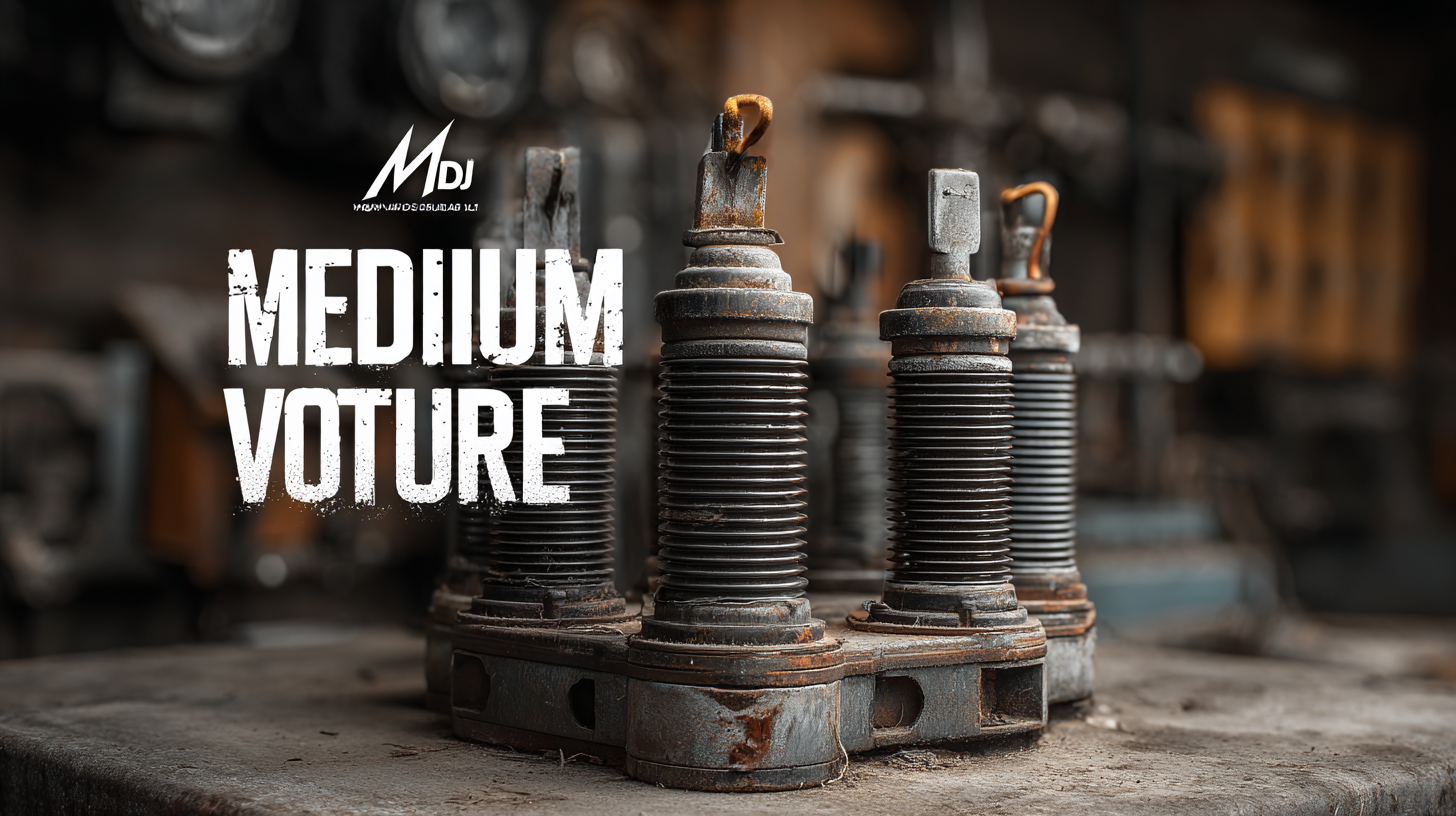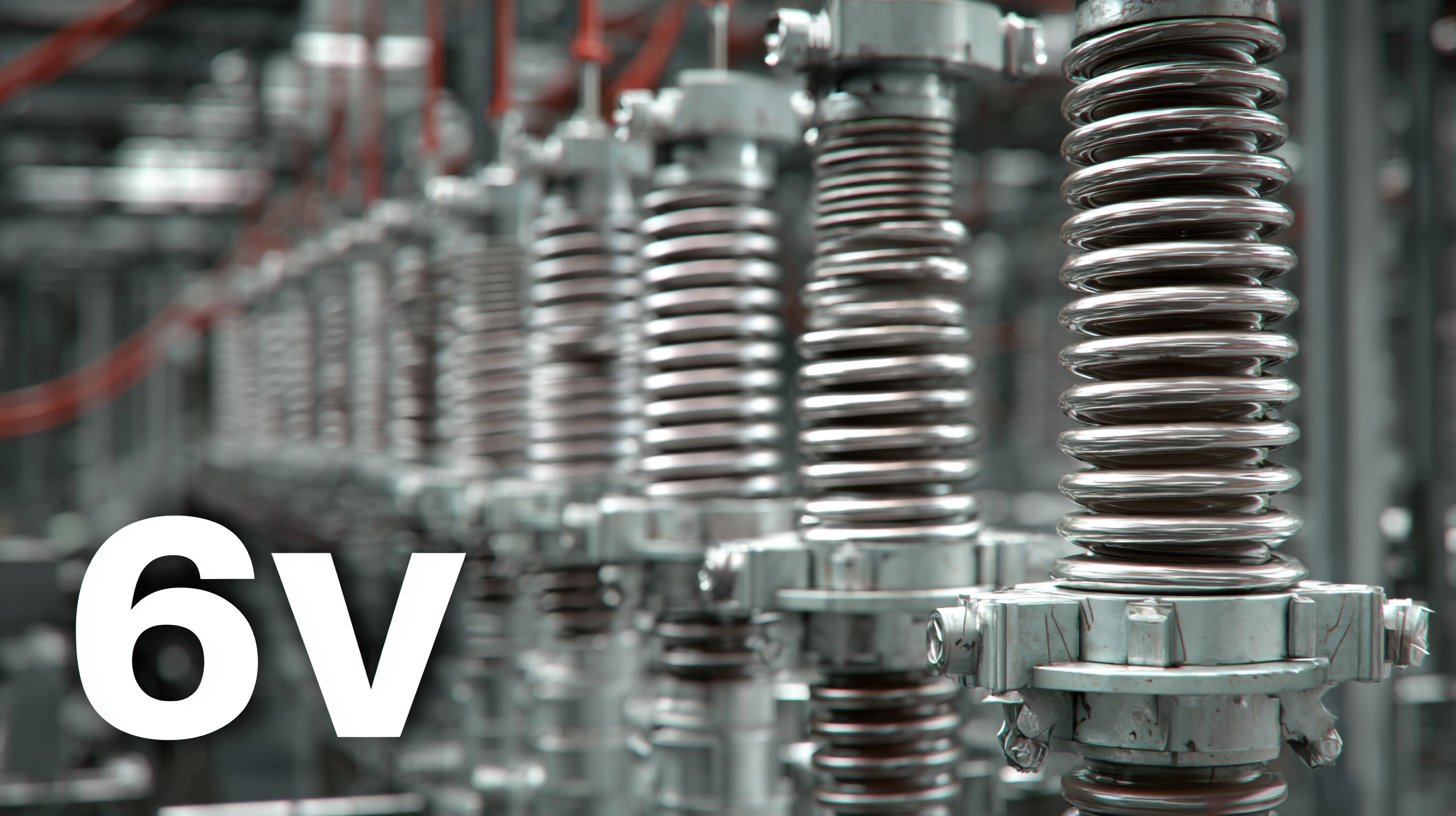Leave Your Message
In today's rapidly evolving electrical industry, selecting the right Medium Voltage Insulator is paramount for ensuring the reliability and safety of electrical systems. As per the latest report by Grand View Research, the global medium voltage insulator market is projected to reach USD 6.67 billion by 2025, driven by the increasing demand for renewable energy and smart grid technologies. The right insulator not only enhances the performance of power systems but also minimizes outages and maintenance costs. Given the critical role that Medium Voltage Insulators play in electrical infrastructure, industries must navigate various factors, such as material type, environmental conditions, and compliance with international standards, to make informed decisions. This blog aims to provide six essential tips to help industries choose the best Medium Voltage Insulator, ensuring both quality and reliability in their electrical applications.

When selecting medium voltage insulators for your industry, several key factors come into play to ensure optimal performance and safety.
First, consider the type of insulation material. Common options include Ethylene Propylene Rubber (EPR) and Cross-Linked Polyethylene (XLPE), each offering distinct advantages in terms of durability and resistance to environmental factors.
The choice of insulation can significantly impact the longevity and reliability of the equipment, making it crucial to match the material to your specific operational conditions.
Voltage rating is another critical consideration. Medium voltage applications typically range from 1 kV to 35 kV, and selecting an insulator that can handle the expected voltage level with a proper safety margin is essential.
Over time, the demand for electricity continues to rise, as seen in the projected growth of the switchgear market. This increase in load requires insulators that can handle higher performance levels without compromising safety.
Therefore, thorough research and a robust selection process are paramount to ensure that the right insulators are chosen for your application,
contributing to the overall efficiency and resilience of your electrical systems.
When selecting medium voltage insulators, understanding the different types available and their specific applications is paramount. Medium voltage insulators typically fall into several categories, including porcelain, composite, and glass insulators. Porcelain insulators are known for their mechanical strength and durability, making them an excellent choice for outdoor environments where durability against harsh weather is a concern. They are often used in substations and on transmission lines due to their ability to withstand heavy pollution and electrical stress.
Composite insulators, on the other hand, are favored for their lightweight properties and resistance to contamination. Their Non-ceramic insulators are ideal for locations where maintenance access is limited, as they do not require the same level of upkeep as traditional materials. Meanwhile, glass insulators offer excellent electrical performance and are highly resistant to degradation over time. Each type of insulator has its unique advantages, making it crucial for industries to assess their specific needs, environmental conditions, and operational demands before making a choice. Understanding these distinctions will help ensure that the selected insulator not only meets performance requirements but also optimizes longevity and reliability in medium voltage applications.
When selecting medium voltage insulators, understanding the environmental conditions of the installation site is crucial. Factors such as temperature, humidity, pollution levels, and exposure to chemical agents significantly impact the performance and lifespan of insulators. For example, areas prone to high humidity and fog may require insulators with higher creepage distances to prevent tracking and flashover. Conversely, in arid regions, dust accumulation can lead to similar issues, necessitating insulators that are easier to clean and maintain.
Another important aspect is the potential for electrical and mechanical stress caused by environmental conditions. In locations where high winds or seismic activity are common, insulators must be designed to withstand these forces without compromising their integrity. Additionally, corrosive environments, such as coastal areas with salty air, call for insulators made from materials that resist corrosion. By analyzing these environmental factors, industries can ensure they select the most effective medium voltage insulators that enhance reliability and safety in their operations.
| Tip | Description | Environmental Condition | Recommended Insulator Type |
|---|---|---|---|
| Evaluate Voltage Ratings | Ensure the insulator can handle the voltage requirements for safe operation. | High Voltage Areas | Porcelain Insulators |
| Consider Temperature Range | Select insulators that can withstand extreme heat and cold. | Extreme Weather Conditions | Polymer Insulators |
| Assess Pollution Levels | Choose insulators designed for areas with high pollution or industrial fallout. | Urban and Industrial Areas | Composite Insulators |
| Check Mechanical Strength | Ensure the material is durable and can withstand physical stress. | Windy Regions | Glass Insulators |
| Evaluate Time of Installation | Choose insulators that can be installed quickly if downtime is a concern. | High Demand Areas | Easy-to-Install Insulators |
| Review Maintenance Requirements | Select insulators that require minimal maintenance for longevity. | Remote Locations | Low-Maintenance Insulators |
When selecting medium voltage insulators for your industry, assessing their quality and reliability is paramount. To begin with, one should evaluate the materials used in the insulators. High-quality ceramics or composite materials often yield better performance under varying environmental conditions. Look for insulators that have been tested against industry standards to ensure they can withstand mechanical stresses and electrical fatigue over time.
Additionally, the manufacturing process plays a crucial role in the reliability of medium voltage insulators. It's important to choose products from reputable manufacturers known for their rigorous quality control procedures. Inspecting certificates of compliance can provide insights into the factory’s adherence to quality standards. Furthermore, consider the insulator's tracking and erosion resistance, as these factors greatly influence their longevity and performance. Regular field testing and reviews of long-term installation performance can also reveal insights into how the insulators perform in real-world applications, which is essential for making an informed choice.

In the evolving landscape of medium voltage insulator technology, understanding future trends and innovations is paramount for industries aiming to enhance their electrical infrastructures. Recent market analyses indicate that the medium voltage insulation segment is poised for substantial growth. The utility composite insulator market alone is projected to exceed $1.8 billion, with a compound annual growth rate (CAGR) surpassing 6.5% from 2025 to 2034. This growth stems from ongoing efforts to modernize electrical grids and replace unreliable components, ultimately improving system reliability and efficiency.
Innovations in medium voltage insulators are crucial as industries adapt to changing requirements and technological advancements. Materials and designs that enhance durability, thermal performance, and resistance to environmental factors are being prioritized. The increased focus on high voltage equipment, with projections for the segment spanning multiple voltage levels including MV, highlights a significant shift towards not only better performance but also toward sustainability and resilience against climate conditions. As investments in infrastructure modernization surge, the implications for insulator technologies become even more critical, underpinning the industry's future direction.

